From 1929 to 2001, the Academy of Motion Picture Arts and Sciences staged 73 award ceremonies at nine different venues. The range of sites reflects the diverse eras and ceremony formats of the Academy Awards, as well as the ever-changing demands of putting on an industry event with a global audience. However, on March 24, 2002, film’s most important night found a bespoke home in the then brand-new Kodak Theatre, now the Dolby Theatre.
Anchoring the retail complex at Hollywood Boulevard and Highland Avenue, the venue sits adjacent to the TCL Chinese Theatre, also an Oscars venue back when it was Grauman’s Chinese Theatre. The Dolby was built with two mediums in mind, film and television, and has been the permanent home of the Academy Awards since 2002, with the ceremony only venturing afield again during the pandemic year of 2021.
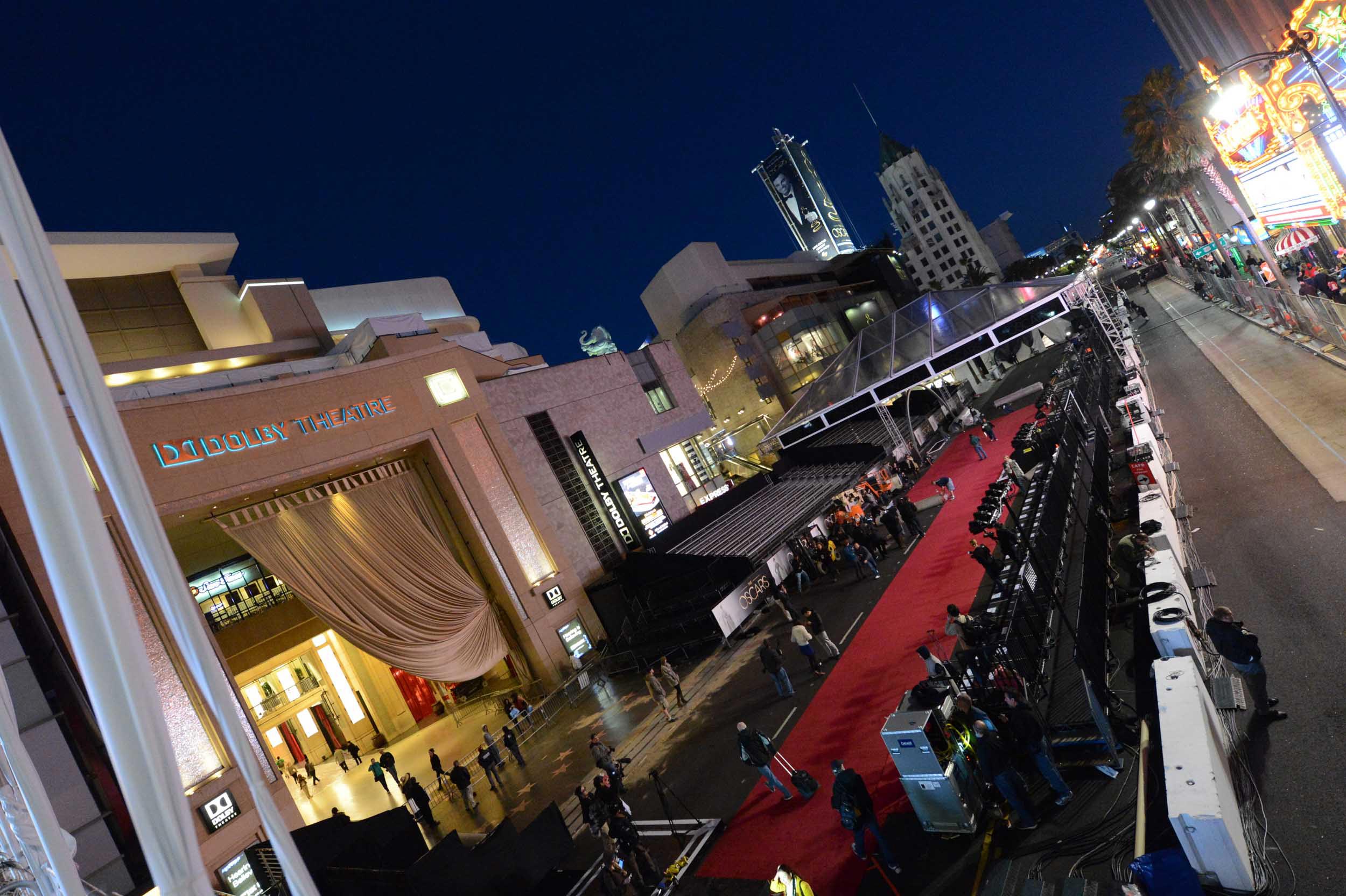
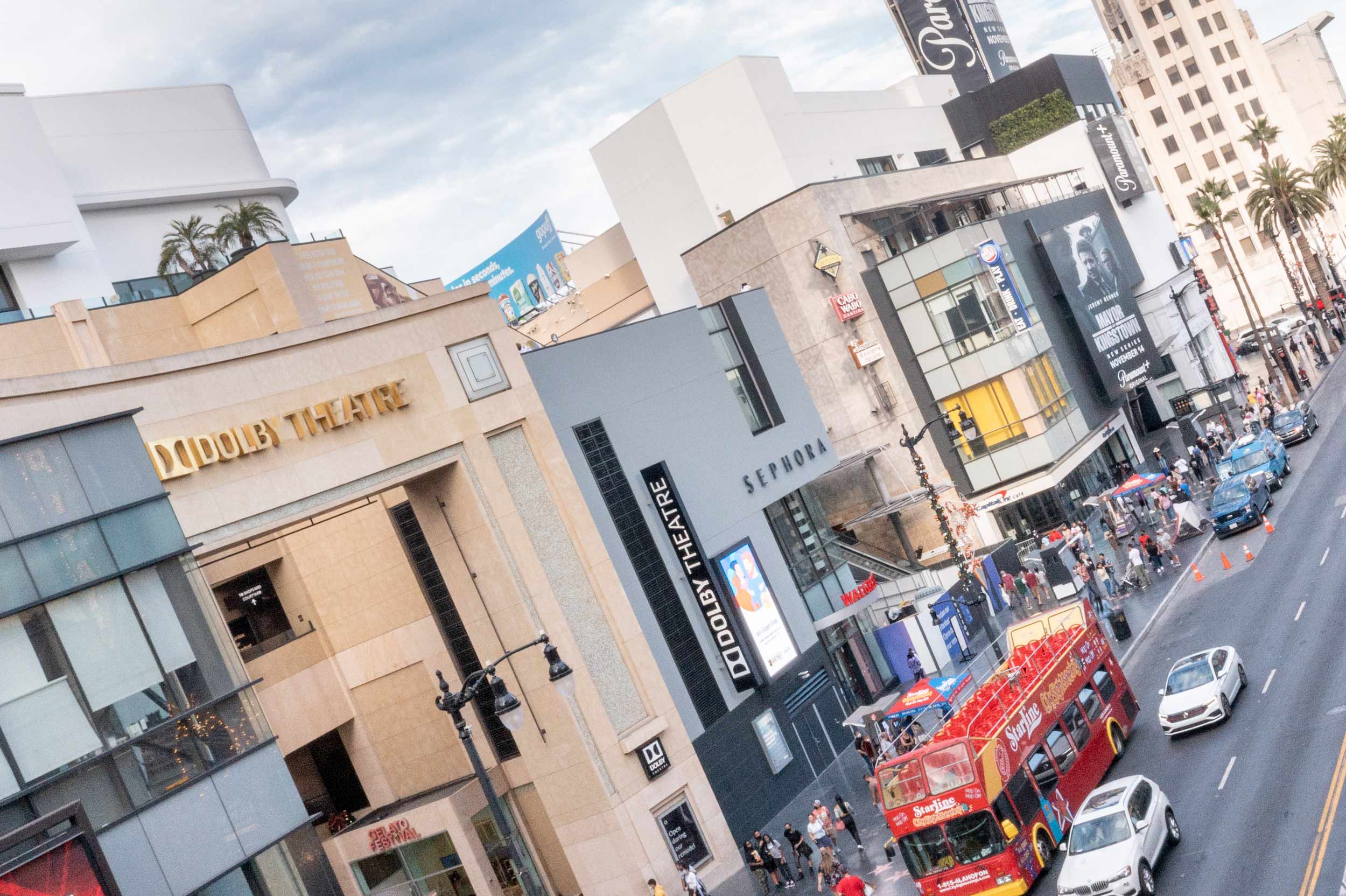
Images: (left) Exterior of the Dolby Theatre during set up for the 84th Academy Awards, 2012. Courtesy of Academy Awards reference collection, Margaret Herrick Library, Academy of Motion Picture Arts and Sciences, photo: Greg Harbaugh; (right) Dolby Theatre. Photo by Joshua White, JWPictures/©Academy Museum Foundation
At the end of the 20th century, the Academy Awards hopscotched between two venues, the Dorothy Chandler Pavilion and the Shrine Auditorium. Each site presented challenges for ceremony producers.
The Chandler had served as home to many ceremonies, but the venue was smaller than the event needed, especially its stage. The Shrine also had a respectable Academy Awards history—and a giant stage—but had not been built to support the technical demands of an increasingly complex television production.
The Academy saw a way forward when it was approached by TrizecHahn, a real estate firm that had plans for a new development at Hollywood Boulevard and Highland Avenue. With the Academy of Motion Pictures operating as partner and advisor, and public funds provided by the Los Angeles Community Redevelopment Agency, the $94 million Kodak Theatre was built within a larger complex costing $615 million and dubbed “Hollywood & Highland.”
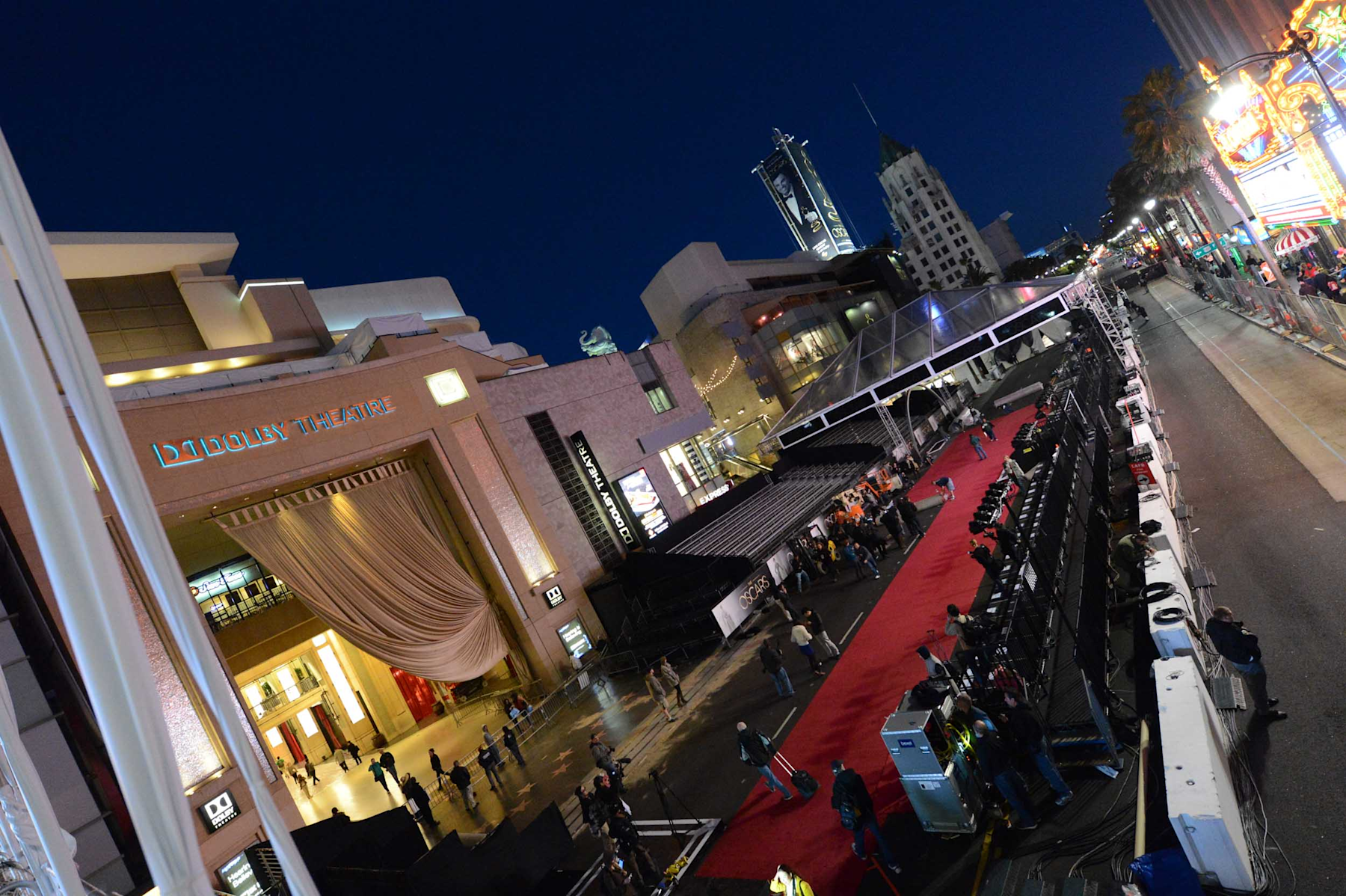
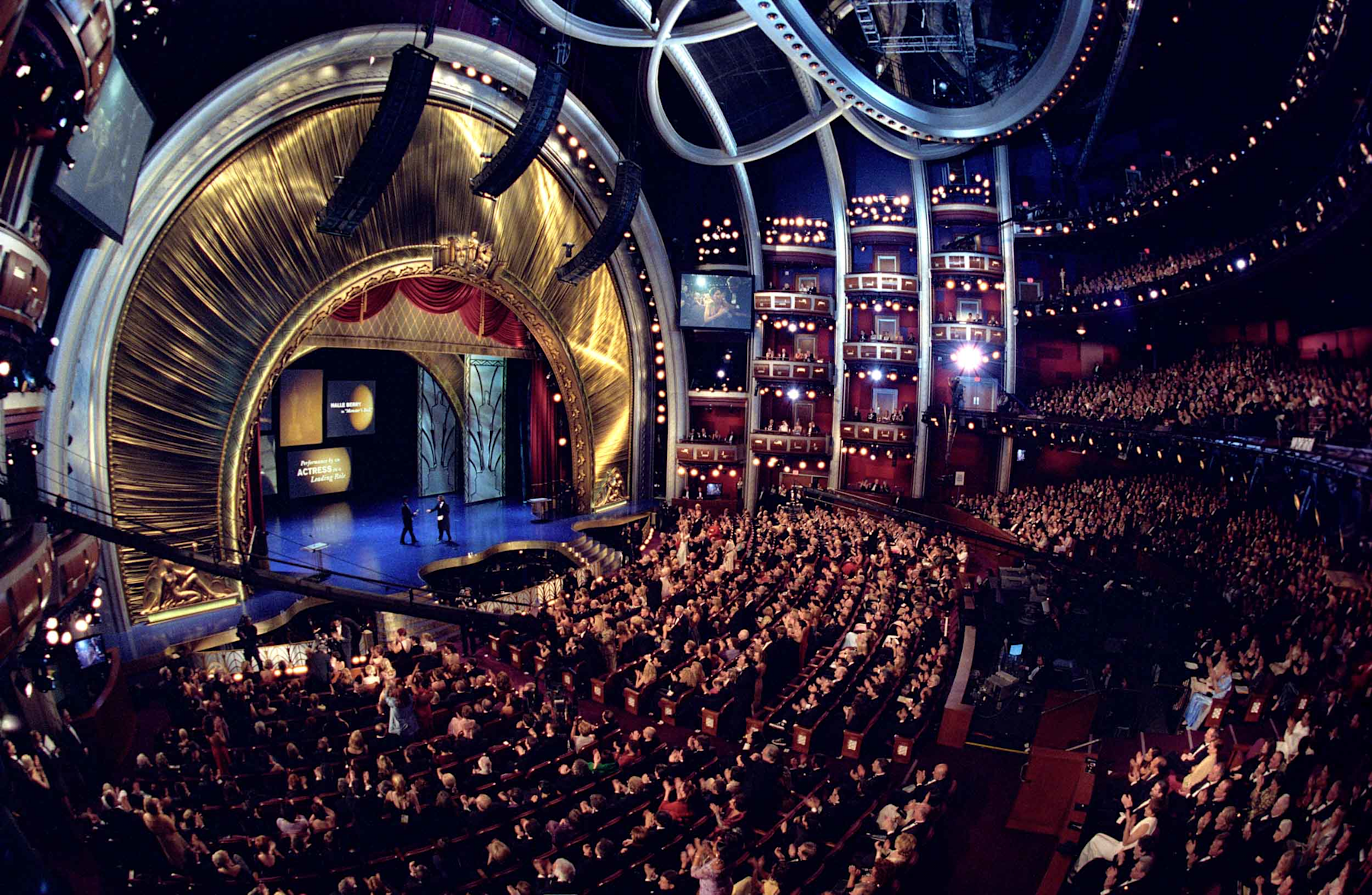
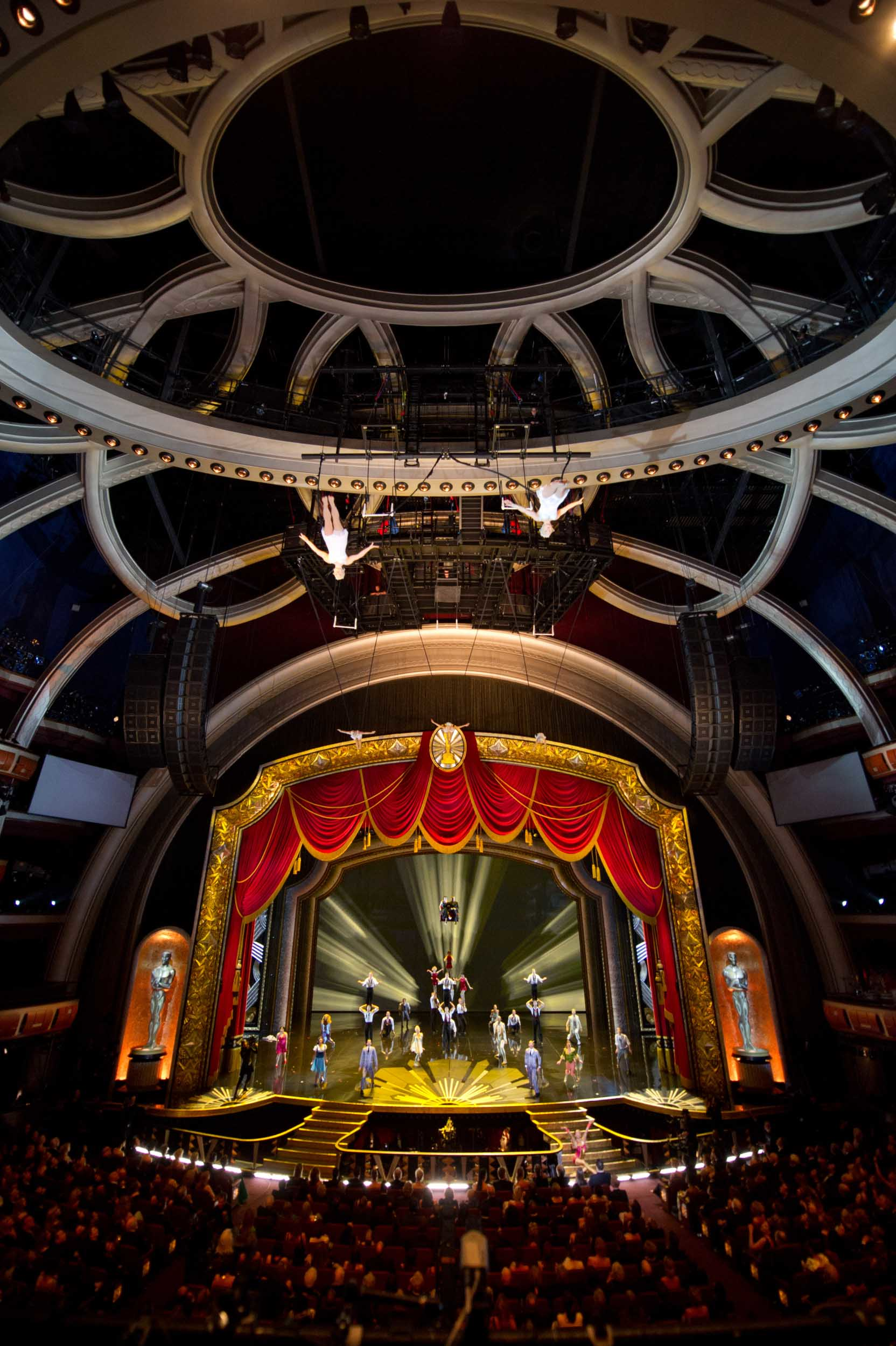
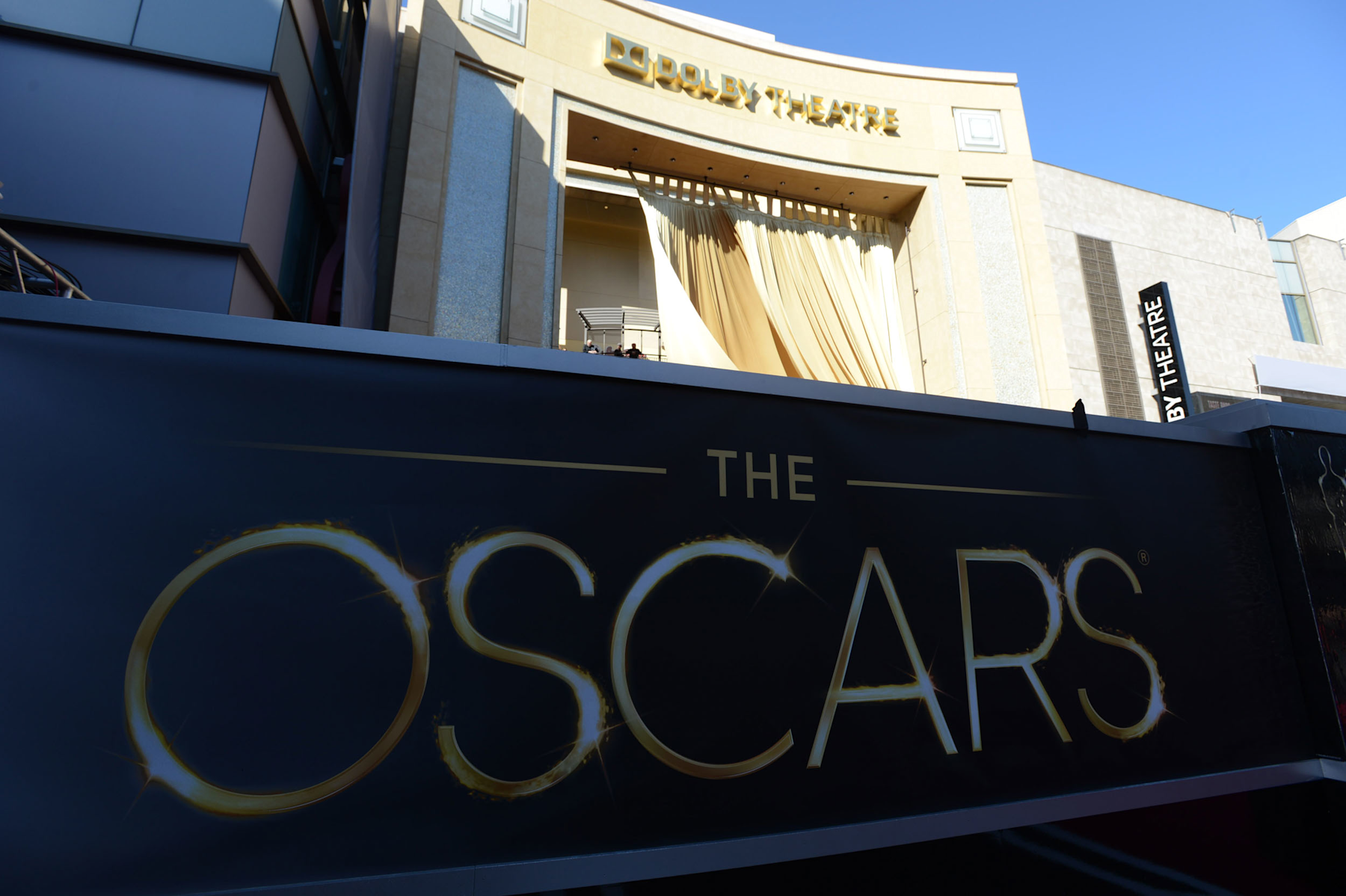
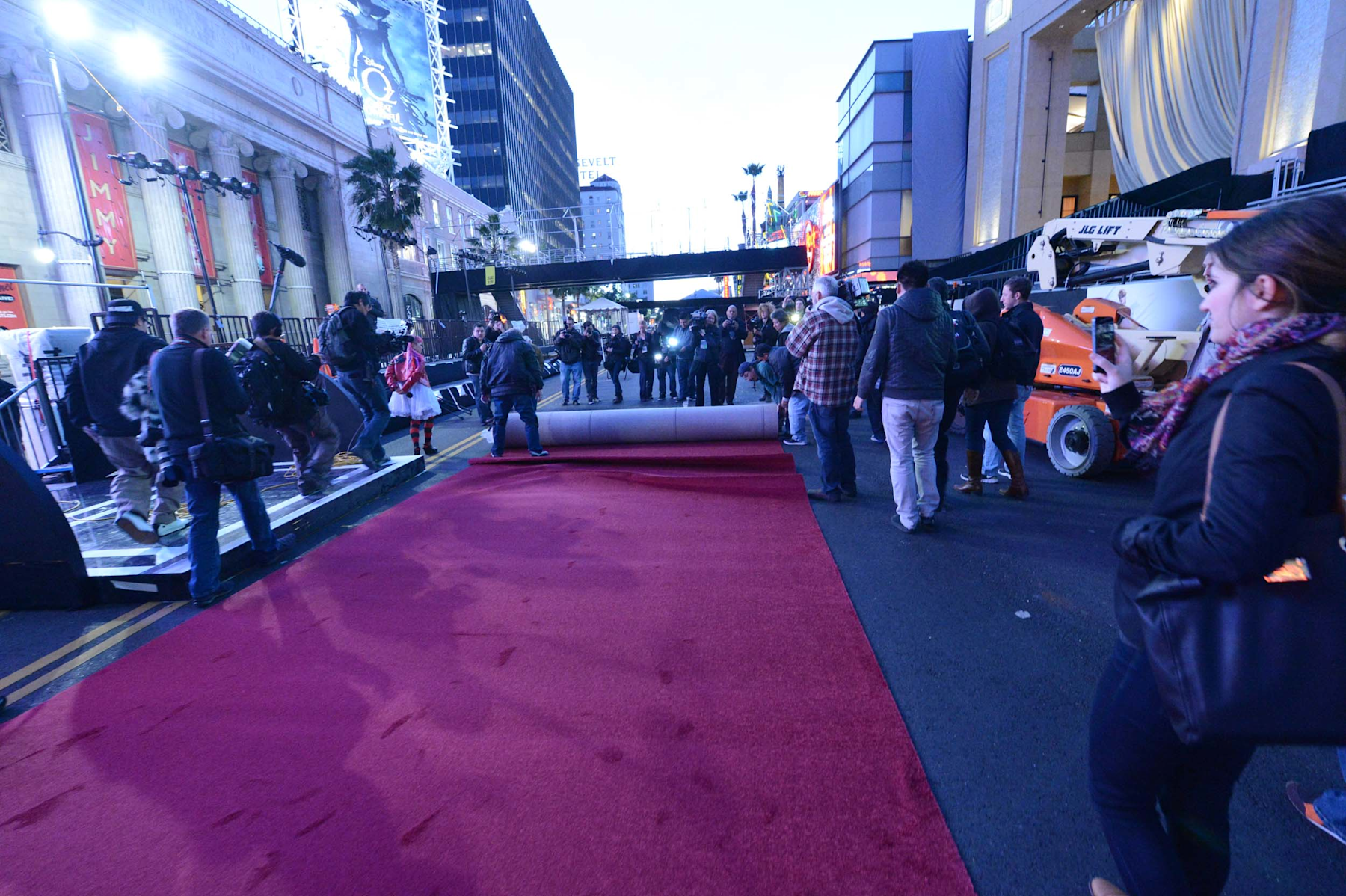
When it debuted, the Kodak Theatre was named after the iconic analog film and imaging company, which purchased naming rights for $75 million. In a sign of changing times, Dolby Labs later acquired those rights after Kodak declared bankruptcy.
Designed by longtime Awards production designer David Rockwell, the 3,400-seat theater features a stage that is only slightly smaller than the Shrine’s, as well as many special Oscars touches. The venue’s aesthetic recalls Hollywood’s Golden Age movie palaces, with columns displaying the names of past Academy Award for Best Picture winners and blank spots left to accommodate future winners through 2071. Each seat is within four seats from the aisle, giving nominees an easy path to the stage. The theater also includes 14 fixed camera positions and a “media cockpit” on a hydraulic lift in the middle of orchestra seating. Cabling, the nervous system of any modern media production, runs through hidden but accessible channels in the flooring and walls. An equally accessible ceiling grid allows lights to be added and removed as needed. “The entire facility,” said Rockwell, “from Hollywood Boulevard to the stage, is predesigned to work as a TV production facility.”
Every production has unforeseen challenges, and the Academy Awards were tested in 2021 by the demands of the global COVID-19 pandemic. The Dolby was not built with the open-air spaces needed to accommodate the moment, so the 2021 Oscars were temporarily relocated to Union Station. But when conditions are right, the Oscars are sure to be back in their home at the Dolby.